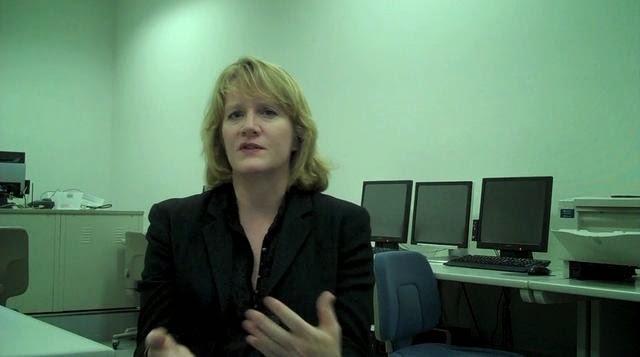49th Annual IATEFL Conference and Exhibition Hugh Dellar talks to Nik Peachey
http://iatefl.britishcouncil.org/2015/interview/interview-hugh-dellar
I
will not make a secret of it! I never, ever and I do mean never miss
presentations by Hugh Dellar at IATEFL. The reason is that he manages to present
in a way that combines the theoretical with the practical in a meaningful way
which is entertaining at the same time. In his interview to Nik Peachey, Hugh
talks about his new project, using National Geographic photos in teaching as a
part of a publishing project, he gives tips about how visual material can be
used in class and finally gives us some advice on what to do if we want to become
involved in Materials’ Writing.
‘’Underestimating
the power of the pictures.’’
Hugh Dellar
mentioned that this new project made him look at pictures from a teacher’s and
a writer’s point of view. He had the
courage to admit that before getting involved with this project he had underestimated
the strength of the archive, thinking that it hosted very dramatic pictures of
wild life, for which he didn’t necessary see a purposeful use in the language
classroom. The writer and speaker went
on to add that it is not always the pretty pictures that get the job done in
class. Sometimes, what we need is the ambiguous and the unusual to spur more
discussion. Both interviewer and interviewee agreed that the NG pictures are
very global, which means that the teacher can bring in lots of different aspect
and allow points of cross-cultural comparisons. Hugh Dellar also made mention
of using videos in class. He mentioned that they are predominantly used as a
means of listening practice, which gets students to decode information. He then
added that he is also interested in using videos as a means of encoding, by
getting learners to repeat or act out what is on the video.
Tips for using
images in class.
When asked by
Nik Peachey to give some practical pointers to teachers who want to find their
own visual resources, Mr. Dellar mentioned that right now there are so many
available resources that teachers need to be critical in their choice of visual
material. The writer advised teachers to think of the language aim first, the
output they want their learners to produce and the language they want to emerge
in class and based on that they to look for pictures.
Referring to
videos, Hugh Dellar mentioned that sometimes the videos used in class are
interesting but not useful and it is difficult to balance the unity of the
input. It is also problematic to manage to find graded input and then focus on
the language and not only on the content. ‘’This is a lot to ask of individual
teachers.’’ Mr Dellar said ‘’and I don’t know if I could do that when I only
had three years’ experience of teaching.’’
Tips for teachers
who want to try out writing materials.
Hugh Dellar
pointed out that the bad thing is that the smaller publishing houses, which had
the time and the energy to mentor young writer and bring them slowly out, have
sold out to larger, international publishing houses. This means that there is less room for face
to face mentoring but on the upside we get to benefit from the wider diffusion
of expertise. ‘’There is a lot more sharing and pulling of expertise about how
to develop your craft.’’ Hugh Dellar pointed out and Nik Peachy was quick to
add that novice materials’ developers do not have to work in isolation anymore.
The speaker agreed with that point and mentioned that teachers who want to become
writers can benefit from joining groups such as Teacher2Writer who train
teachers to become writers and from getting involved in the Material’s Writing
IATEFL SIG which will give them the opportunity to learn from other people’s
experience.
Finally, the
speaker raised another interesting point when he said that it is a challenge
for any teacher to write materials in such a way so that other teachers can use
them. Obviously, it is one thing for the activity to work for the teacher who
has designed it, but how well does it actualize when a different teacher uses
it? For this reason, Hugh urged teachers to share their material to see if its
value is transferred in other people’s classrooms. I particularly liked the fact that Hugh Dellar
referred to editors as the voice of the
teachers who are not like you and the comment he made about the important
part this unseen heroes play.
 | |||
| Hugh Dellar presenting at #IATEFL2015 on ''Can a picture tell a thousand words?'' | Photo by Eftychis Kantarakis |
Personal comment
What I got out
of this interview was a reminder of what a daunting and complicated task it is
to write materials that will be taught in the absence of the writer, in diverse teaching settings, ones in which
the writer has never taught. Despite that the tasks will have to be meaningful,
purposeful and worth the time learners and teachers will spend on them. Every
single teacher becomes (and should become) a mini-material’s developer while
planning lessons and designing tasks. The difference is that we know how we
intend to use this material and what we want it to generate. Giving it a shape
that is immediately understood by other professionals is quite different and
infinitely more complicated.



Σχόλια
Δημοσίευση σχολίου